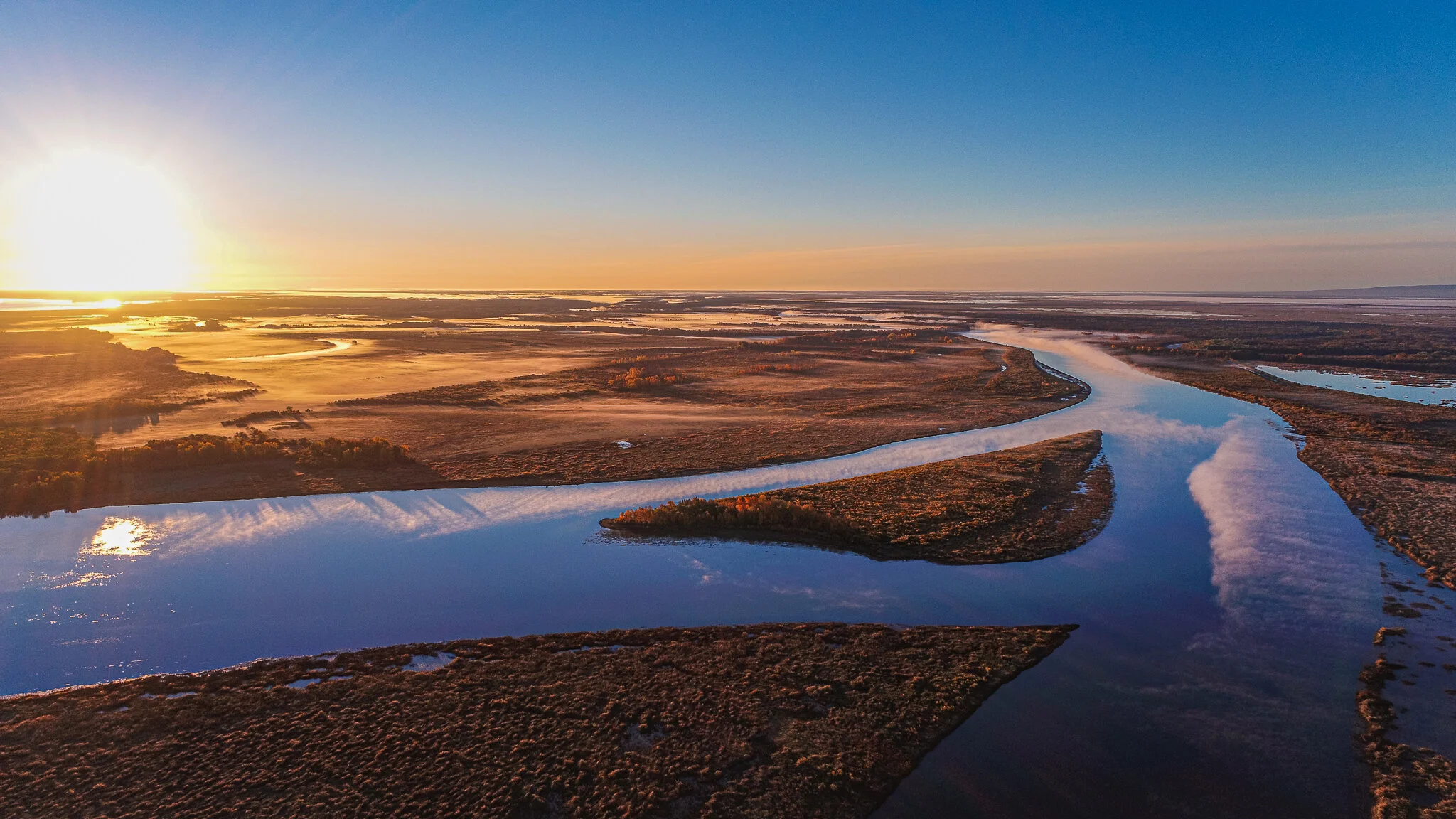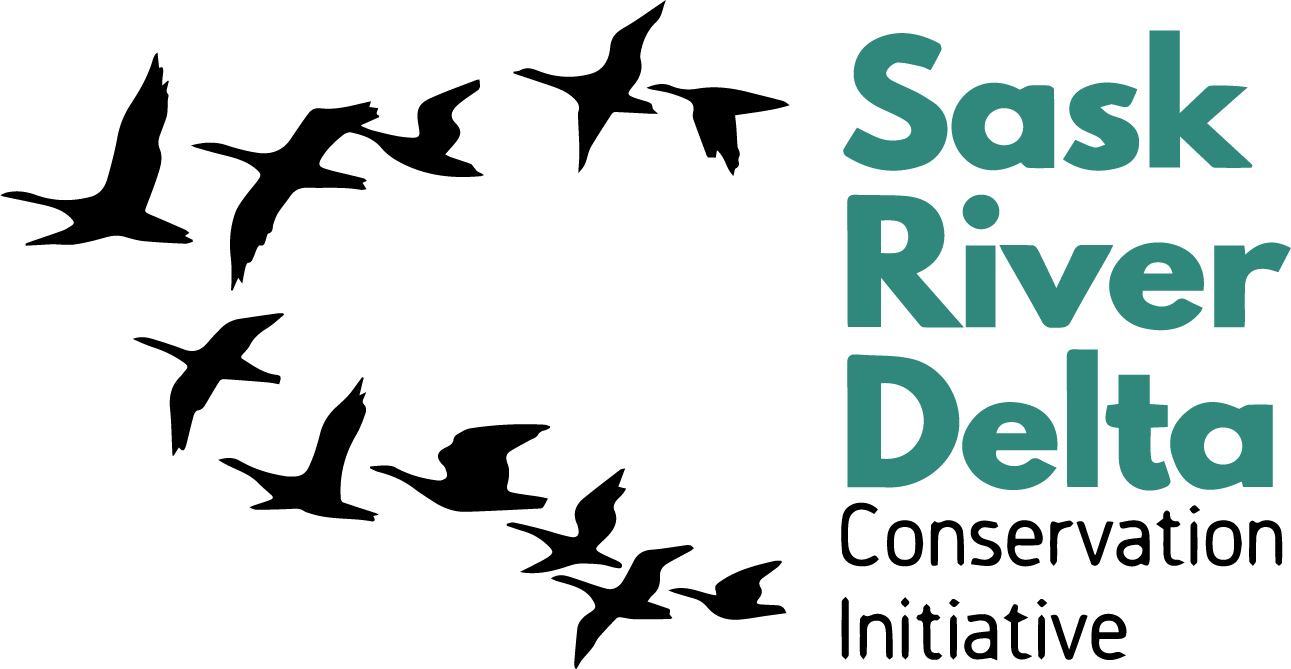
What is a delta?
According to National Geographic, a delta is a series of wetlands and river channels that are formed when water and sediment from a river enter a new body of water that is slower moving (a lake, ocean, or another river). As the bodies of water meet, the flow slows down and sediments suspended in the river fall to the bottom, creating new landforms.
What is an inland delta?
An inland delta (also known as an inverted delta) is a rare form of delta. Instead of emptying into another water body, the river empties into the land across multiple channels and wetlands. Eventually, the channels reconnect and flow into a large, main channel which leads to another water body. The Sask River Delta flows out into Lake Winnipeg, spilling into Hudson Bay and joining the Arctic Ocean.
The Saskatchewan River Delta is a rare inland delta.
The Saskatchewan River Delta is a rare landscape formed over thousands of years by flowing water creating an ecosystem so rare that the very land
itself is alive.
This ecologically valuable area is incredibly rich in biodiversity and has an unmatched capacity for supporting a wide array of species.
The Delta’s Formation
Over 10,000 years ago, a glacier melted and formed a lake called Lake Agassiz. The Saskatchewan River flowed into ancient Lake Agassiz, where sediment has built up over the years to form the current river channels and wetlands of the Saskatchewan River Delta.
The Saskatchewan River Delta, from Canadian Geographic.
Today, water enters the Saskatchewan River Delta from the Saskatchewan River.
The Saskatchewan River splits into channels as it moves East through the Delta, travelling over the land in Northeast Saskatchewan and Northwest Manitoba.
These many channels reconnect to the Saskatchewan River, which ultimately drains out through Cedar Lake and Lake Winnipeg in Manitoba (smaller remnants of Lake Agassiz).
The habitat created by the Delta offers a place for species of all kinds to thrive. To explore this bountiful diversity, click below.
Birds
cree ● common names
Lichens
cree ● common
names
Plants
cree ● common names
Fish
cree ● common names
Mammals
cree ● common
names
While many species still flourish in the Delta, locals and researchers alike have noted a severe decline in certain species over the past 4 to 5 decades.
This includes muskrat and moose populations that are currently dwindling. This is in part due to a change in food and habitat, including the increase of invasive species like Phragmites grasses.
The Saskatchewan River Delta is the largest inland river delta in North America.
The Cumberland Marshes portion of the Saskatchewan River Delta is designated as an Important Bird Area (IBA). An IBA recognizes sites as internationally important for bird species and biodiversity.


